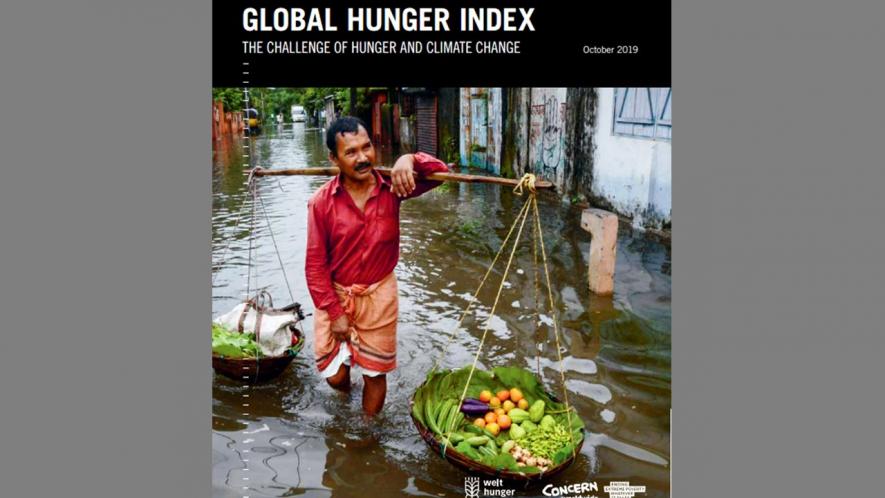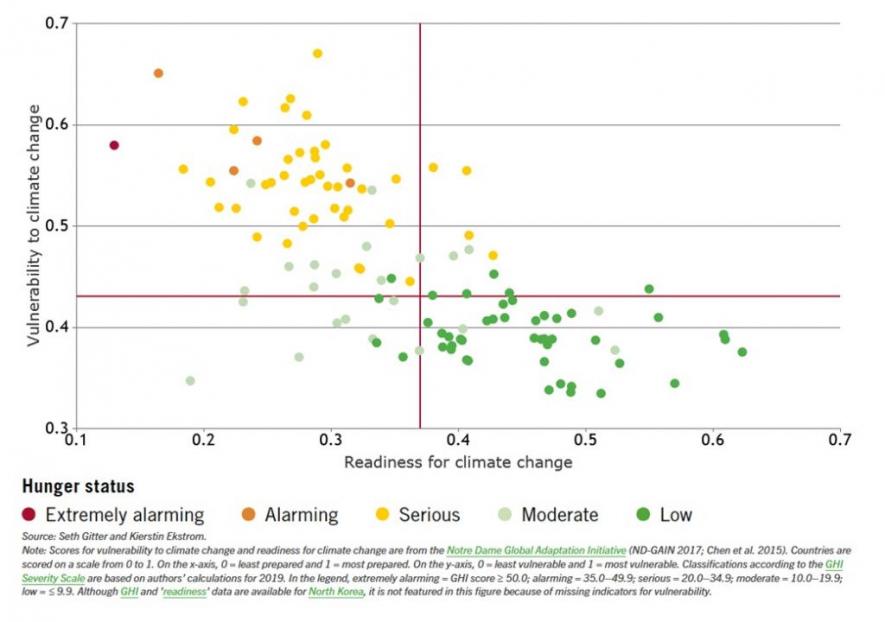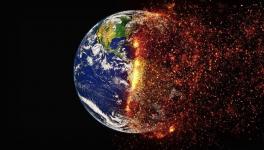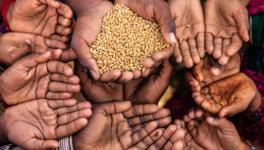Climate Change Will Worsen Global Hunger and Malnutrition, Warns Report

Every year, the Global Hunger Index (GHI) comes out with a spotlight essay that encompasses various aspects linked to global hunger and malnutrition. For example, there was an essay on forced migration and hunger in 2018, inequality and power differentials in global hunger in 2017, armed conflicts and global hunger in 2015 etc.
This year, the spotlight article is climate change and its impact on global hunger.
The 2019 essay in the Global Hunger Report reviews the increasingly clear threats that climate change poses to global food production, nutrition and its obvious impact on the most vulnerable sections of the population. The essay shows that climate change’s impact on global food production will exacerbate global hunger. It also explores the way forward and provides some suggestions that may appear as tough choices before the policy makers.
The essay opens with highlighting the alarming trend of rising number of hungry people worldwide since 2015. This is a shift that the Food and Agriculture Organisation (FAO) has attributed to the persistent instability in conflict-ridden regions, economic slowdown and afflicting climate events.
In this regard, an immediate example could be that of the El Nino of 2015-2016. The effect of El Nino was exacerbated by many factors, one of which is the rising sea level and sea surface temperature, which led to widespread food insecurity and hunger in multiple countries.
According to FAO, since the 1990s, the number of extreme weather-related disasters have doubled, affecting the productivity of major crops and causing food price hikes and income losses. These disasters had a negative impact on people living in poverty and their access to food.
Climate Change and Food Security
The prominent manifestations of climate change are global warming and great carbon dioxide concentration in the atmosphere that combines to give rise to extreme weather events, such as heat waves, droughts and floods. Food production under these threats is likely to fall and their nutritional quality decreased. Production of major food crops, such as maize and wheat, is declining. The FAO says that in semi-arid regions of the world, 80% or more of year-to-year variation in cereal production can be attributed to climate variability.
The sea level rise poses a special risk to food production in small islands, low lying coastal areas and river deltas. Take the example of Mekong delta of Vietnam. Over 50% of Vietnam’s rice production comes from the Mekong delta and as the sea level rises, rice production is likely to be affected the most. Rice is a staple crop consumed by almost half of the world’s population and is highly sensitive to minor changes in temperature and water salinity, which makes yields of this important crop susceptible to climate impacts.
Climate-related disasters, such as droughts, floods and storms, account for 80% of international disasters. During 2011-2016, severe droughts affected large parts of the world and, according to FAO, some 124 million people of 51 countries were affected by acute food insecurity. The El Nino event of 2015-2016 also affected several countries that reeled under severe drought. It impacted 50-90% of crop harvest in El Salvador, Guatemala, Honduras, etc.
In times to come, unabated global warming and carbon emissions would worsen food productivity at a global level, warns the essay. Obviously, the marginalised and the already low hunger-indexed countries will have to bear the brunt.
Climate Change and Nutrition
Climate change has also impacted nutrition levels in food. A higher carbon dioxide concentration reduces protein, zinc and iron content in crops. As a result, by 2050, an estimated additional 175 million people could be deficient in zinc and an additional 122 million people could experience protein deficiencies.
This impact will be felt heavily by people living in poverty, who depend almost solely on plant sources for meeting their nutritional needs. Poor sections in South and South East Asia, Africa and West Asia are at greater health risk. Notably, these regions also have a weak public health system and the climatic impact on food nutrition would make their health conditions worse.
Vulnerable and Least Ready Countries
The GHI provides a score in the scale 0 to 100, with 0 the best score (no hunger) and 100 the worst (extreme hunger). The GHI classified the countries with a score above 35 as alarming and countries with score above 50 extremely alarming.
The GHI shows that countries with extremely alarming or alarming scores are the most climate vulnerable and are also the least prepared to tackle climate challenges, while countries with the least score are the least climate vulnerable and are also the best prepared. (see graph below)

The essay criticises those who till recently saw climate change as a biophysical process. Climate change is not a mere biophysical process, it is intricately related to the global production system and the lifestyle of people. It should no longer be voluntary to implement agreements like the Paris Agreement. There needs to be internationally mandatory norms to be followed by the world community.
Get the latest reports & analysis with people's perspective on Protests, movements & deep analytical videos, discussions of the current affairs in your Telegram app. Subscribe to NewsClick's Telegram channel & get Real-Time updates on stories, as they get published on our website.
























